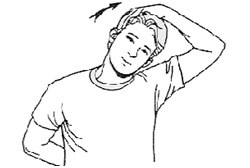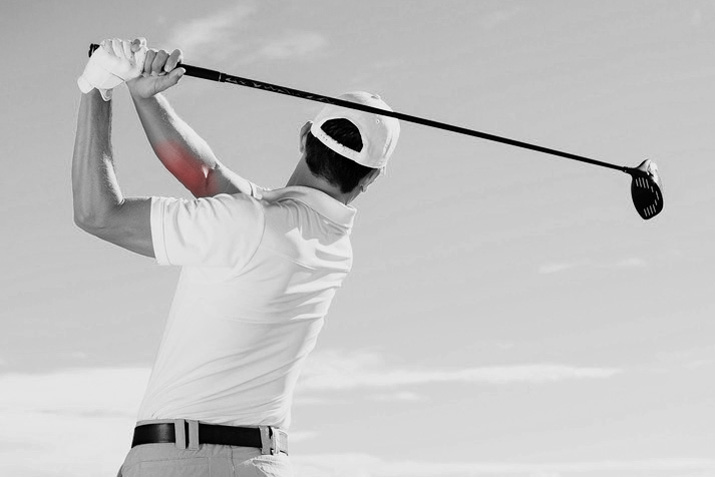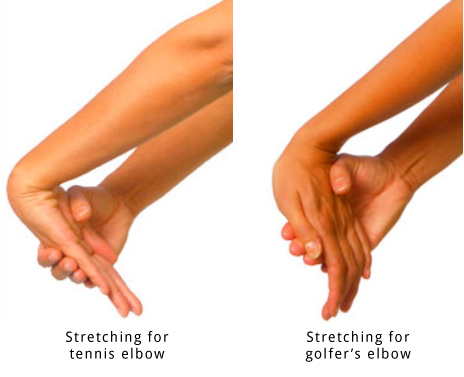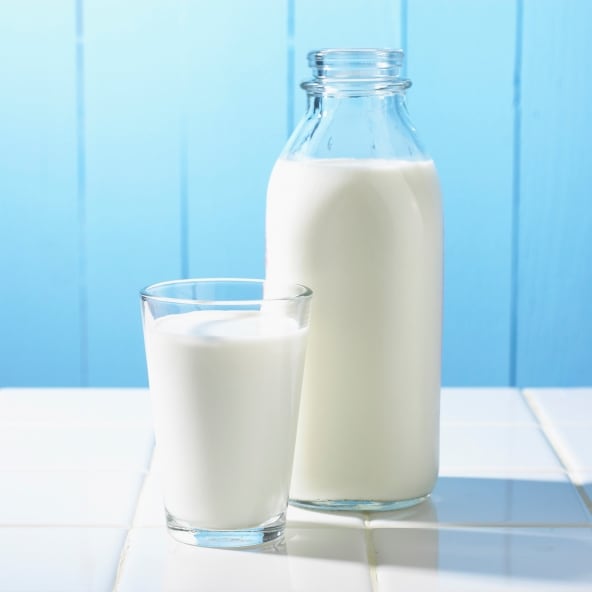Monthly Archives: June 2017
6 Stretches to help Relieve Sciatic Pain!
Posted on June 28, 2017 by admin
Sciatica occurs when the sciatic nerve which runs along from the lumbar vertebrae down to the leg is compressed. There are many reasons why sciatica occurs. It most commonly occurs due to a herniated disk or bone spur on the spine compressing onto the sciatic nerve. In most cases, the pain associated with sciatica can be fixed with non-surgical treatments.

Here are some exercises and stretches you can try to relieve sciatica pain:
- Reclining pigeon pose: This pose helps with opening up your hips by first laying down on your back then bring your right leg to a right angle. Bring the left leg up and rest your right ankle on the left knee and hold. This helps stretches out the piriformis muscle.
- Sitting pigeon pose: This pose is similar to the reclining pigeon pose but the starting position is sitting upright.
- Forward pigeon pose: This pose begins with kneeling on all four and then bringing the right ankle over the left knee, similar to the reclining pigeon pose.
- Knee to opposite shoulder: Starting in the supine position, bring one of your knee up to the opposite shoulder.
- Sitting spinal stretch: Sitting down with your legs straighten out then have your right leg, bent, and cross over the left leg lining up with the left knee. After, gently turn your body towards the right.
- Standing hamstring stretch: Have your right leg elevated near the hip level and slowly bend down to reach your toes.

These stretches can help reduce or relieve pain associated from sciatica and are convenient to do at home!
Stretches to do in the Office
Posted on June 21, 2017 by admin
Do you sit in the office for 8 hours everyday? Overtime, sitting down for prolong periods of time may result in higher risks of heart and musculoskeletal problems. Take a moment and try these quick stretches and exercises that is perfect in the office work environment.

1.Walk around the neighborhood during your lunch break: If you’re starting in a new office, it is a good time to walk around the area to enjoy the sun and nearby parks. Letting your body walk around after hours of sitting down can help stretch and activate the muscle fibers.
:fill(87E3EF,1)/about/walking-park-boardwalk-Bart-Dubelaar-Moment-Open-GettyImages-159081719-56a9dbeb5f9b58b7d0ff908b.jpg)
2. Neck and Upper back stretches: Looking down or at the computer screen for long periods of time can put a lot of stress on your neck so trying out these few stretches for the neck and upper back can regain your focus.

3. Cat and Cow pose: This stretch helps with flexion and extension of the back muscles and spine by arching the back in and outwards while on your knees.

4. Stretch the legs: Standing up and bending to reach down to your toes can help with flexibility and stretching of the hamstrings.

5. Stretching the arms: This is a simple stretch that you can do while sitting in your chair at the office. All you have to do is raise your arms up, lock your fingers and pull up.
6. Stretching the hand and fingers: Squeezing a stress ball that help stretch out your fingers and activate the forearm muscles.

It only requires a few minutes to do these stretches at work so if you need to take a break, try and incorporate these into your day at the office!
The Difference Between Golfer’s Elbow and Tennis Elbow
Posted on June 15, 2017 by admin
Medial epicondylitis, also known as Golfer’s elbow, is a condition where the tendons on the inner part of the elbow are inflamed or injured. The tendons on this side are attached to the muscles that help bend the wrist and fingers. Inflammation of the tendon on the outer portion of the elbow is called Lateral epicondylitis or Tennis elbow. An individual with this condition will have pain or difficulty extending the fingers or bending the wrist backwards. Although they are commonly known as Tennis elbow and Golfer’s elbow, it does not mean only people who regularly play tennis or golf experience this. Normally, these conditions occur when that area is overused.

Who are affected?
Not only golf and tennis players are affected, many individuals who overuse their forearm by bending the wrists can be affected too. Tennis elbow is common in adults between the age of 30-50. Individuals who are plumbers, cooks, or carpenters are more at risk for developing this condition due to overworking of the muscles and inflaming the tendon. For individuals who garden, shovel or play golf frequently may be at higher risk of developing medial epicondylitis as these actions mainly require the use of flexor muscles in the forearm.



Symptoms
For Tennis elbow, symptoms include:
- pain radiating from outside of the elbow down to the forearm
- tenderness on the outer part of the elbow
- weak grip or weakness in forearm
- pain is present when gripping
For Golfer’s elbow, symptoms include:
- pain and tenderness on the inner part of the elbow extending to the inner forearm
- stiffness
- weakness in hands and wrists
- numbness or tingling sensation in the ring and pinky finger
Normally, treatments for both medial and lateral epicondylitis are non-surgical. The most important treatment for these conditions is to rest or reduce the amount of strain on the tendon and muscles surrounding the elbow. This treatment may require wearing a brace or splint. Other treatments available are ice, stretch, or electro therapy.

If these conditions worsen or do not show any improvement, find a licensed health care provider
Spondylolysis vs Spondylolisthesis
Posted on June 13, 2017 by admin
Spondylolysis is a condition where there is a fracture at the vertebrae while Spondylolisthesis is the term used when one of the vertebrae slips out of alignment which may affect the spinal nerves. In some severe cases, if the bone is fractured too much, it can lead to the slippage of the bone. This injury is common in young athletes who often have chronic stress applied to the lower back.
Spondylolysis
As mentioned above, this is a condition when a fracture has occurred on the vertebrae. The vertebrae consists of 24 bones stacked on top of each other producing your spine which contains the thin but crucially important spinal cord. The fracture mostly occurs at the weakest area, pars interarticularis, which is the thin part of the vertebrae connecting the upper and lower facet joints. One of the most common area in the vertebrae for these fractures to occur is in the lumbar region, mostly at the fourth or fifth lumbar vertebra.
Spondylolisthesis
This condition is more prone to occur if you already have Spondylolysis. When the pars interarticularis portion of the vertebra is damaged or separated, it can lead to slippage of the vertebra in the forward position and causes pinching of the spinal nerves that affects other regions of your body. This commonly occurs at the lumbar region, where the “S” curve is prominent and most of the stress occurs at this region.

Symptoms
Some symptoms may not occur if the cases are mild for both Spondylolysis and Spondyloisthesis. During mild cases, the condition is normally determined when looking through an x-ray. Symptoms of these conditions include low back pain, stiffness, muscle spasms, and difficulty standing or walking.
For Spondyloisthesis, numbness or tingling sensation can occur as there is impingement of the spinal nerves due to the shift in the vertebra.
Treatments
The goal of these treatments is to reduce pain, allow the fractures to heal so the individual can return to daily sport activities without major complications. There are two surgical and non-surgical treatments for these two conditions.
Non-surgical treatments include:
- Rest
- Exercise Therapy or Chiropractic Treatment
- Braces
If these non-surgical treatments do not help then the doctor will recommended surgical treatment on the vertebra.
Prevention
Always stay safe when playing sports to reduce the risk of developing Spondylolysis and Spondyloisthesis. If you experience any of the symptoms mentioned above, make a quick appointment with one of our practitioner here at Rupert Health Centre as your vertebrae physically functions to protect your nerves, not to cause damage to them!
Temporomandibular Joint Disorder
Posted on June 8, 2017 by admin
Temporomandibular joint disorder, also known as TMJ disorder, occurs when there is pain or discomfort at the temporomandibular joint located between the jaw and temporal bone of the skull. This joint acts as a sliding hinge that executes jaw movements such as talking, eating, and yawning by using the jaw muscles.


Causes
The causes of TMJ disorders can be hard to diagnose because there are many contributing factors causing discomfort to that area. These include:
- Dislocation of the jaw joint
- Arthritis
- The disk found at the joint is out of alignment
Symptoms
Some symptoms you may experience when you have a TMJ disorder are:
- pain or tenderness at the jaw joint
- aching around your ears
- difficulty chewing
- locking of the jaw
- aching shoulders
There are many treatment options to consider if you have a TMJ disorder. Taking anti-inflammatories can decrease the amount of pain you are experiencing. If one of the underlying causes for your TMJ pain is due to grinding at night, your doctor may suggest a mouth guard to prevent build up of stressed caused by teeth grinding at night. Taking a break from chewing and eating softer foods can help relieve some pain so there is less stress on your jaw muscles. Some soft tissue therapy has been known to help relieve some pain with this condition. There is also surgery to help with TMJ disorders however it is not suggested unless other treatments are not helping or it is affecting your daily living.

Many doctors can help you with your TMJ disorders and suggest treatment options appropriate for your condition. Seeing a dentist, family doctor, or even a chiropractor can help with your TMJ pain.
Calcium and Vitamin D
Posted on June 6, 2017 by admin
Calcium plays an important role for your body. It is known as a mineral that makes your bones stronger however it works with Vitamin D for it to function at it’s optimal. The daily recommended intake for Calcium is 1,000 milligrams for adults. How does Calcium help the body?

Calcium can greatly decrease the risk of developing Osteoporosis, which is the weakening of the bones. With Calcium alone, it is hard to build healthy and strong bones so it requires Vitamin D to help. There were studies that show taking calcium by itself does not reduce the risk of getting fractures. The question is, how does Vitamin D and Calcium work together to develop healthy bones?
Vitamin D helps the body absorb calcium more efficiently, so it can do its job and build bones through osteoblasts. Bone is constantly being built and broken down so it is important to receive the recommended amount of Calcium and Vitamin D.
Not only does Calcium help with bone growth, it is used in many metabolic and physiological process occurring in the body. It is important for muscle contractions since you are always moving and using the muscles.

You can get your daily dose of Calcium through dairy products, and you can get Vitamin D through absorbing some sunlight during a nice sunny day!

Smoking Effects on Musculoskeletal Health
Posted on June 1, 2017 by admin
You may know that smoking increases the risk of developing cardiovascular and respiratory diseases, but did you know it can negatively affect your musculoskeletal system as well? The musculoskeletal system includes the bones, muscles, joints, ligaments, and tendons which all play a role in executing movements. Smoking can weaken your bones and makes the healing process slower so your body becomes more prone to injuries and chronic inflammation.

How does Smoking Affects your Health?
- It increases the risk of developing Osteoporosis: Smoking increases the rate of mineral loss in your bones so it weakens overtime causing fractures to occur easier and more frequently. The bone is weakened through several ways. The nicotine found in cigarettes can slow down the production of bone-forming cells called osteoblasts so more bone is broken down rather than being made.
- The blood vessels become damaged: When your blood vessels are damaged, the amount of blood and oxygen supply to your tissues is significantly reduced which affects the tissue’s performance. This can lead to cardiovascular diseases and problems while exercising.
- Smoking increases injury and pain to muscles: Smokers tend to suffer chronic or traumatic injuries to the muscles more often than non-smokers. This is due to the slower healing process smokers have, making it more prone to injuries. As it is slower for the muscles to heal, the duration of pain and inflammation lasts longer. Studies show that smokers are more likely to experience tendinitis and shoulder pain resulting in a higher risk of getting rotator cuff injuries.
- Exercise is negatively affected: The carcinogens in cigarettes damages the lung tissues so overtime your lungs cannot work as efficiently compared to a healthy lung. During exercise, your body requires more oxygen due to quicker metabolic rates occurring in working tissues. If the lungs are damaged, it is harder to reach that oxygen supply needed therefore your lungs need to work harder to maintain its function. Smokers will experience shortness of breath a lot more than non-smokers. Demand for oxygen causes heart rate to increase and blood flow to tissues will increase. If there is damaged to the blood vessels, this can cause more strain in your cardiovascular system which can be dangerous for your body overtime.
Smoking cigarettes negatively impacts your health not only damaging your lungs but also your musculoskeletal system which is another reason why quitting smoking should be encouraged. The earlier you stop smoking, some damages in your body can still be reversible. There are different methods to help quit smoking and even when you do but still experience musculoskeletal pain, you can make an appointment with one of our practitioners today!